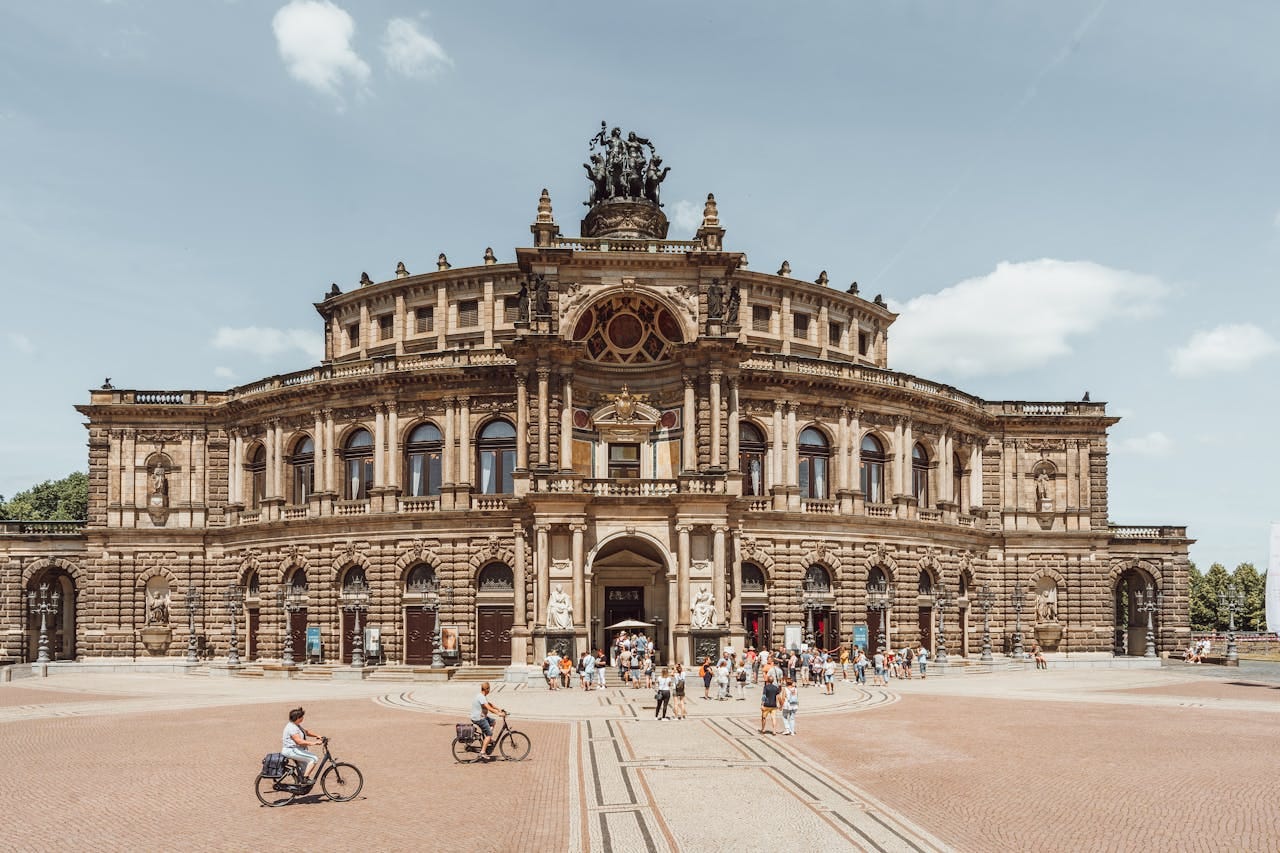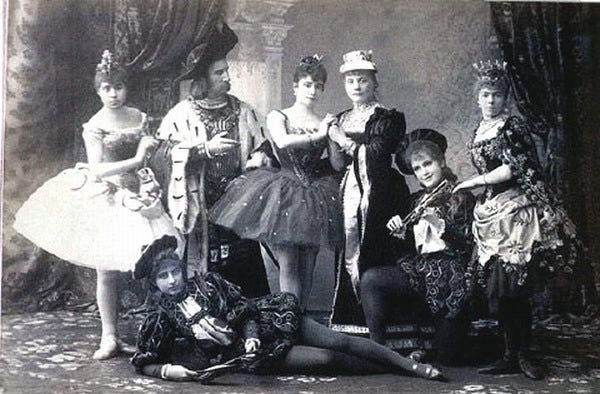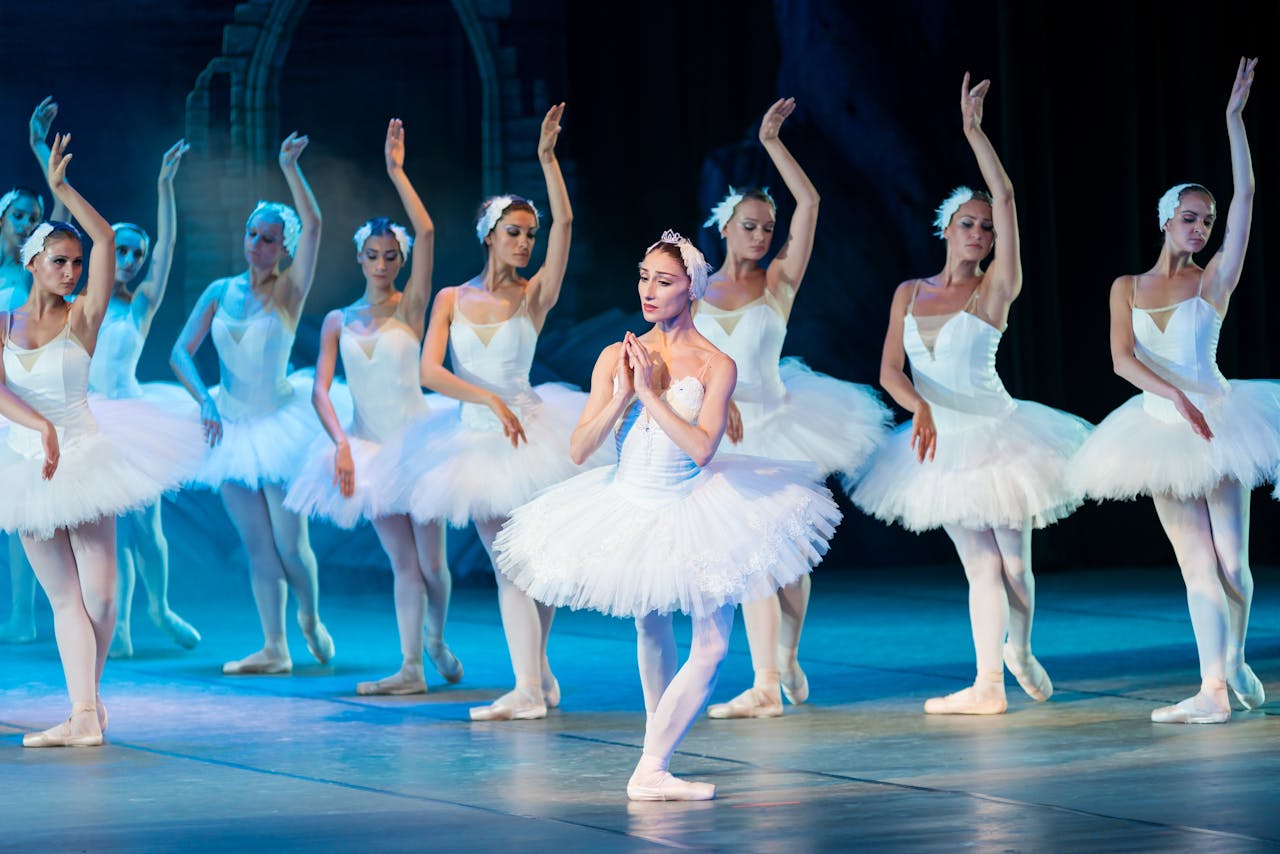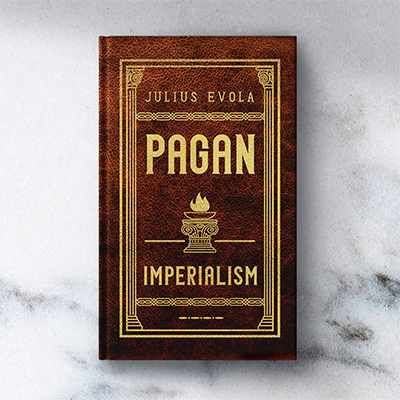Planet Earth has never known a force greater than the imagination of European man. Other men have left monuments, but none on par with the Hyperborean era of human history, whose generative spirit has exhausted itself and must now rise phoenix-like from its own ashes.
So vast were the achievements, and so late have we arrived in the cycle, that it is necessary to view with fresh eyes the wellspring of our creative spirit. And so let us consider one of the noblest and purest blossoms of high civilization: the ballet. In this wordless art form lies a microcosm of the European soul and a perfect encapsulation of all that has been thrown away in pursuit of money and materialism, all the vain gratifications and evil pathways we were warned about in fairy tales, which those ruled by the metaphysical force that places them in opposition to the people of Europe were only too eager to encourage.
We’ll start with the edifice necessary for a proper performance of the ballet, such as the Semperoper in Dresden, Germany. Before such a testament to beauty could be erected, it first had to exist in the minds of men, which is to say it came from that place where everything comes from. It came from magic, or the action of the will upon the imagination, aided by reason. Men reasoned they needed a palace for this art form, imagined it in their minds, and set about “manifesting” it, to use the current buzzword for the sacred science of magic, the most divine of human endeavors, for in the act of creation man mirrors his Creator, as the Creator wishes of him.

The Semperoper in Dresden, Germany
But where did the materials come from? They were certainly not airdropped from another dimension. Everything came from Mother Earth. Is it not astonishing to stop and ponder that after enough time of civilizational ascendance, European man discovered he could cut trees, quarry stones, and mine metals to build anything he could imagine? On Earth, the plant kingdom provided dyes for painting the walls and ceilings and sheep’s wool for curtains and upholstery, while heaven injected forms and inspiration into man’s creative consciousness. He learned to make glass for lighting fixtures and smelt gold for filigree, and to understand that everything had been supplied by the Creator through the expression “God will provide.”
Now let us next take the art form itself. Over centuries of dance, women discovered they could spin on the tips of their toes, turn ten times at lightning speed, and move with such grace they looked like spirits. Men could also move gracefully, leap powerfully, and raise the women in ways that enhanced their beauty. Other men observed and said, “What if you did it this way?”, giving birth to choreography, and the art of ballet gradually became so refined that only the most gifted and disciplined could do it. In other words, it became aristocratic, from the Greek meaning “select the best.” But as beautiful as pure dance is, European man considered it even more powerful when allied to an archetypal story, and so set design and costumes were required, requiring yet more artisans and craftsmen, in order to bring to life fairy tales containing perennial wisdom.
Finally, and perhaps most importantly, is the music itself which accompanies the dance. Before Tchaikovsky could write Sleeping Beauty, based on the Grimm Brothers’ fairy tale from 1812, the entire art form of classical music had to be slowly created over 500 years. Before you can score a ballet for an orchestra, you need violins, oboes, clarinets and French horns, which all have to be made from man’s hands and the materials at his disposal — including gut strings and horsehair bows — but only after they have first been born in European man’s imagination.

Tchaikovsky’s ‘Sleeping Beauty’, St Petersburg, 1890
Between the 1950s and the 1980s, Russia made a number of short ballet films — not recorded stage performances, but actual movies with sets and cinematography. They are mini-masterpieces offering direct transport into the Hyperborean wellspring of the European imagination, in case you’re trying to find your way back to your spiritual home. This leads us to the problem of where you are and how you got there.
It may seem foolish, facing imminent civilizational collapse, to immerse yourself in something as rarified as the ballet until you learn to view it esoterically and see it as a symbol and microcosm for everything you once were. In this wordless world, your intellectual intuition — a term used by Traditionalists such as René Guénon — will see the lords and ladies with their noble and silent gestures, and the dormant powers in the blood will be rekindled by a divine spark. For as Julius Evola teaches, the blood carries the spirit, and the spirit carries the race. And you are living through a very grim fairy tale of the race that threw away everything so it could experience what it’s like to have nothing — including its own homeland.
Christian Chensvold is the author of Dark Stars: Heroic Spirituality in the Age of Decadence, which reveals the influence of Julius Evola’s esoteric writings.





